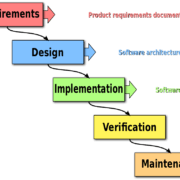Managing Remote Teams and Avoiding Burnout
Avoiding Burnout is Key While Managing Remote Teams
Burnout is a very real thing. Not only in business or in one’s career, but in all areas of life. Burnout at the gym, too much socialization, too much food, and of course – too much work. After all, there is some truth to that age old adage about all work and no play. In the current state of things, remote teams are becoming a standard across almost every industry and marketplace. With that, it’s important for organizations and managers to find ways to provide remote teams with downtime while still remaining efficient and productive.
The way of the world is changing. Every year we’re inching toward a more digital landscape. More integrated technology. More virtual interaction, and of course, more remote work teams. Understanding that this isn’t just a phase, but a larger societal transition will help managers. With this knowledge, leaders are more able to create successful strategies for managing remote workers and staff. There are many benefits to a workforce that predominantly works from home.
For instance, a stronger sense of work-life-balance has been achieved by many workers who used to feel they were lacking in this area. Additionally, teams have shown higher rates of efficiency in certain areas as time-wasting and energy-draining activities are removed from daily schedules.
What Causes Burnout For Remote Teams
There are many factors that contribute to a remote teams burnout. Just like with any other form of a burnout, it doesn’t necessarily stem from a single source. Rather, it’s a combination of elements that lead to an exhaustion. One of the culprits of remote team burnout is video-conferencing. With the transition to remote teams popular video conferencing applications, like Zoom, saw a major surge in usage. From amount of users to amount of time on video-calls, the application soared. So much so that it actually topped the app charts for the first time in a historic moment.
With all this newfound attention, though, it wasn’t before long that some digging was done. The way most video-conferencing applications work is by framing the users face in a very close-up angle. As such, over the period of the video-call users are up-close and personal with one another. Our brains process this type of face-to-face interaction as an extremely intimate exchange. Usually, we only see close loved-ones in this framing. Hence, why so many people feel drained after engaging over a video-conference.
Beyond this phenomenon, though, there are other factors that cause remote teams to burnout as well. Without the interpersonal exchanges that are normally associated with physical office-spaces, it’s harder now to form personal relationships with our coworkers and colleagues. Add onto all of this that those who are fortunate enough to remain working full time from home; now have the pressure of completing their deadlines without the resources of an office, and almost acting as their own oversight.
Incorporating Employee Incentives
Just because employees are working from home doesn’t mean that your organization can’t offer them incentives for strong performance. In fact, in this economic and social climate, showing your employees that you care goes a long way. There are many ways to incorporate employee incentives into remote teams. As the world was already moving toward a more digital age, some teams were already operating on an almost entirely remote basis. Because of that, certain enterprise apps that already exist on the market are specifically designed for employee incentives.
This is great for current managers for a variety of reasons. First of all, that means there are already options for those looking. Simply do a bit of research, pick the provider that seems most suitable and start the incentive process.
However, for managers and organizations that are looking for a bit more specification and customization with their incentive programs, these options still offer value. In one direction, this information and these preexisting options for a remote teams incentive program provides insight into incentive-functionality that works. In other words, companies looking to build a custom enterprise app to handle the incentives for their remote teams, can look to see how the current incentive softwares operate and function, rather than trying to reinvent the wheel.
Types of Incentive Programs
Just like in a physical office, the realm of possibilities for incentives is far and wide. Therefore, the way that employees earn and spend incentive points can also vary widely from organization to organization. In some programs employees simply earn points based solely on performance. Prizes and incentives have various price-points and the more points that one saves, the better incentives they can earn.
Beyond that though, there are also systems that integrate co-worker and colleague recognition. In these incentive type programs, users can also award points to one-another for exceptional work or high achievement in a certain area.
Not only do the ways in which employees earn and receive points vary, but the types of incentives can also vary. While travel destinations used to be extremely popular choices, with the state of the pandemic, travel, while still exciting and fun, can be quite a bit more dangerous these days. Other popular choices include high-ticket items for the household, new electronics, and various other options. No matter the choice, one thing is certain. In these trying times, it’s essential to boost your employee morale, especially in remote teams. Using incentives is a great way to relieve team pressure, and actively work to prevent burnout.
Improve Efficiency Through Enterprise Apps
A main component to effectively running a remote team that remains productive is equipping your staff with the right tools. Regardless of trade, one of the very first lessons to learn is that without the proper tools – nothing gets done. In the context of managing remote teams, this means providing your team with the proper enterprise applications. Implementing the proper corporate applications allows your remote team access to important data, instant communication, and other vital features.
Similar to the discussion on incentive based programs, there are already a plethora of enterprise apps available to businesses. However enterprise applications already on the market tend to be one-size-fits-all. This is important to note because of the variations in workflows and operations from business to business.
As such, when determining whether your remote teams would benefit from an enterprise application that already exists, or a custom enterprise application, you should take a complete and comprehensive look at your team and their specific needs. If you’re already considering investing in an enterprise application, however, it might as well fit your custom needs for the organization. Build an enterprise application that fits your needs completely with the experts at NS804. NS804 is the mobile app developer of the everyday person and businessman.
A Quick Summary
Remote teams are going to be a part of the normal working landscape for the foreseeable future. As such, there’s really no more time to waste in preparing your business or organization for a more predominantly remote economy. Having a sustainable and happy workforce is an important part of that.
Help your teams avoid burnout by equipping them with the right tools to conduct their work, rewarding them with incentives, and making sure to plan off-work bonding events that can bring the team together like D&D. For more information on the future of remote team management, or anything else mobile app development – continue browsing NS804’s library.













Leave a Reply
Want to join the discussion?Feel free to contribute!